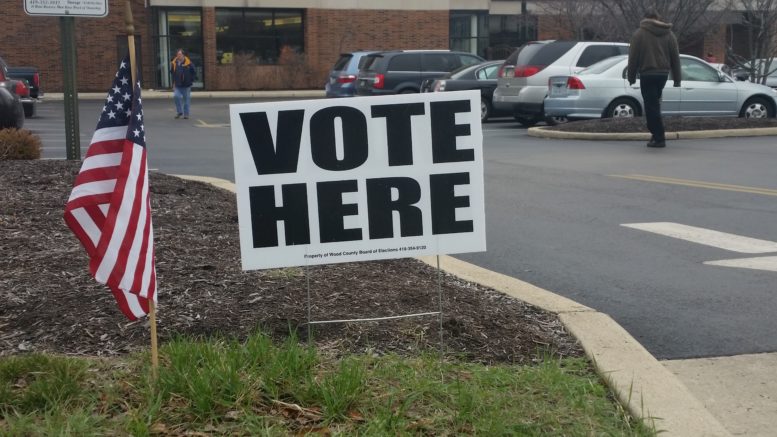By JAN LARSON McLAUGHLIN
BG Independent News
More than 3,400 registered voters in Wood County were purged from the voting rolls last year.
Following a directive from the Ohio Secretary of State, 3,424 registered voters were dropped in August of 2015.
The state’s directive is telling county boards of election to wipe voters from the rolls if they have shown “no voter initiated activity” since the last two federal elections. That “activity” includes voting, signing petitions or filing for a change of address.
Wood County Board of Elections Director Terry Burton explained the process requires the office to send out postcards to registered voters who have not voted in the last two federal elections. That postcard is basically asking the citizen, “Are you still there?” Burton said.
If the citizen getting the postcard does not respond, their status goes “inactive,” however, they can still vote, Burton said.
But if the person has four more years of no voting activity, they are kicked off the rolls.
“Those people get purged,” Burton said.
“After eight years and a mailing,” he said. “I don’t think that’s a real stringent bar.”
But Mike Zickar, who serves on the county board of elections, sees it differently.
“I see it as a clear violation of law,” Zickar said, adding that national voter law forbids removing people from rolls due to their voting inactivity. “Very few states are throwing people off for not voting.”
A federal lawsuit against Ohio Secretary of State Jon Husted has added to debate among voting rights activists and elected officials during the 2016 election cycle.
The lawsuit is asking the court to stop the purging process from going forward, and for other purged voters to be re-instated ahead of the November 2016 election. The suit alleges that because so much attention is on the presidential race this year, a much larger number of infrequent Ohio voters will be “denied the opportunity to cast a vote that counts.”
According to Zickar, studies show that a disproportionate number of minority voters are thrown off of rolls during purging efforts.
But Husted maintains that the purging is legal and that over the past five years, his office has removed 465,000 deceased voters and 1.3 million duplicate registrations.
Zickar is pleased that Husted’s office is being sued over its directives, but worries that a ruling could come too late for this fall’s election.
“I would guess we will find out pretty soon,” on the initial ruling, but that will almost certainly be appealed, Zickar said.
According to Burton, the federal rules are basically the same, but in Ohio, the purging process is done every year, not every other. He added that in recent years, under Husted’s leadership, Ohio boards of elections have gotten more serious about reviewing their rolls.
“For a long time, we weren’t doing purges. We were just adding,” Burton said.
That change in emphasis may be why the process is being questioned, he added. “The newness of the purges is causing some of the angst.”
Of the 3,424 Wood County voters purged last August, none of them voted provisionally in November 2015 or March 2016, according to Dale David, of the Wood County Board of Elections. None of those purged have re-registered in the county, he added.
“We don’t ever remove anybody without a notice going out,” David said. “There is a process. It’s not just arbitrary.”
Since the annual effort to more thoroughly examine voter rolls began four years ago, David said, he has not heard of any local citizen complaining of being bumped off the rolls. “I’ve not been aware of anytime a person felt they were taken off incorrectly.”
Burton also said he is not aware of any voter showing up at the polls to find themselves off the rolls. “I don’t think we have heard complaints,” he said.
Burton stressed that to be purged, a registered voter must not vote, ignore communication from the board of elections, and not check with the board about their registration. To stay registered, “You don’t ever have to vote,” as long as you respond to the board’s postcards, he said.
But Zickar questioned the value of the mailers sent to inactive voters. “With the amount of mail we get these days, I don’t see this as due diligence.”
Burton suggested that anyone with questions about their voter registration status should call the local board of election or check online. “Certainly, if there’s any doubt, check with us.”
Those citizens not currently registered have until Oct. 11 to register for the Nov. 8 election.

